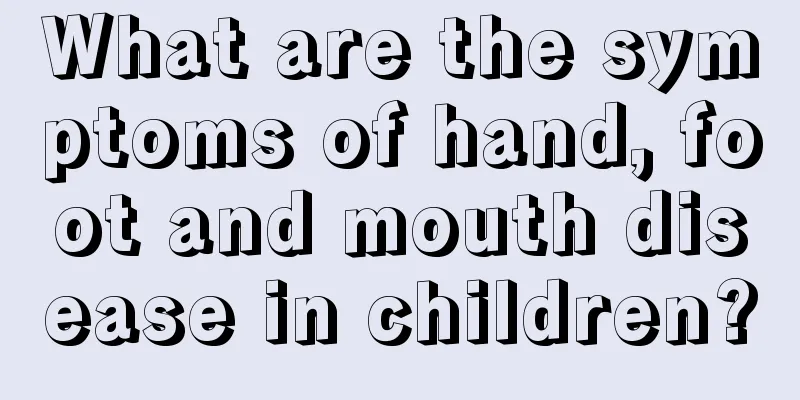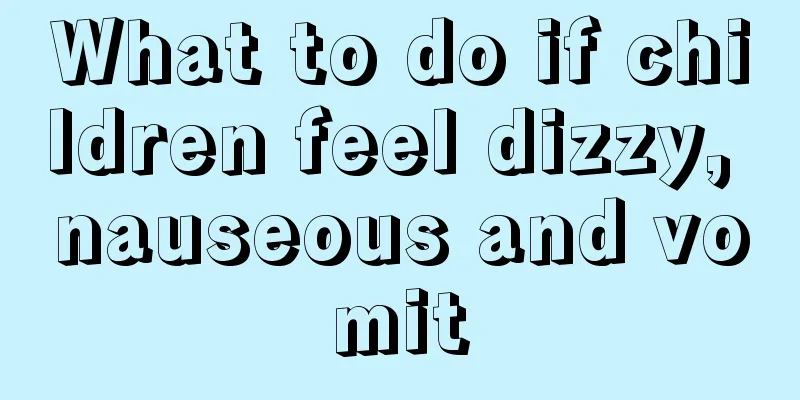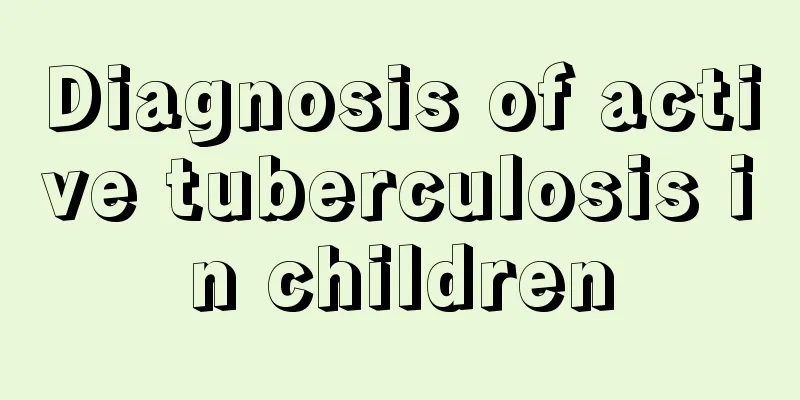What are the symptoms of hand, foot and mouth disease in children?

|
Children are active and naughty, and have a strong curiosity about everything. Therefore, it is not uncommon for children to get hurt. Among them, infectious diseases have the greatest impact on children, especially viral diseases such as hand, foot and mouth disease, which can pose a serious threat to children's growth and development. Let's take a look at the symptoms of hand, foot and mouth disease in children. I hope everyone understands this. (1) Acute onset, with an incubation period of 3-5 days, and prodromal symptoms such as low-grade fever, general malaise, and abdominal pain. Scattered painful, millet- to mung-bean-sized blisters appear on the oral mucosa, and maculopapules and herpes appear on the hands and feet. Initially, they are maculopapules, which later turn into herpes. They are round or oval, about 3-7 mm in size, like the size of a grain of rice, smaller than the chickenpox rash, harder in texture, with a red halo around it, and less fluid in the blisters. Dot-like or flaky erosions can be seen under the grayish-white membrane. After the rash subsides, no scars or pigmentation are left. If there is a secondary infection, the skin damage will often be aggravated. (2) In addition to the hands, feet and mouth, the rash can also be seen on the buttocks and near the anus, and occasionally on the trunk and limbs. It dries up and disappears after a few days, and the rash does not itch or cause pain. (3) Some children may develop generalized papules and blisters, accompanied by aseptic meningitis, encephalitis, myocarditis, etc. It may be accompanied by symptoms such as cough, runny nose, loss of appetite, nausea, vomiting, and headache. (4) Some cases only present with rash or herpetic pharyngitis. The whole course of the disease is about 5-10 days. Most cases can heal themselves with a good prognosis and no sequelae. In a few cases (especially those under 3 years old), encephalitis, encephalomyelitis, meningitis, pulmonary edema, circulatory failure, etc. may occur. (1) Respiratory system manifestations include: shallow and difficult breathing, changes in respiratory rhythm, cyanosis of the lips, white, pink or bloody foamy fluid (sputum) in the mouth, and sputum sounds or moist rales in the lungs; (2) Neurological manifestations include: poor spirit, drowsiness, headache, vomiting, easy to startle, limb tremor, weakness or paralysis; physical examination may show meningeal irritation and weakened or absent tendon reflexes; severe cases may show frequent convulsions, coma, cerebral edema, and brain herniation |
<<: What are the treatments for oral herpes in children?
>>: What are the reasons that cause children to be hyperactive?
Recommend
Common tips for treating baby constipation
It is a common phenomenon for babies to suffer fr...
What to do if your two and a half year old baby likes to suck his fingers
Two and a half year old babies love to suck their...
What to do if teenagers sweat when sleeping at night
Sleeping is something a person must ensure during...
What are the symptoms of neonatal epidemic diarrhea?
At present, the frequency of neonatal epidemic di...
What is the development standard of a 15-month-old baby?
For parents who have a 15-month-old baby at home,...
What to do if your baby has watery stools
Nowadays, there are basically six adults taking c...
Factors that cause sneezing in infants and young children
In daily life, many young parents do not have muc...
How much is the height and weight of a two-year-old and two-month-old baby?
After a child is born, there will be some changes...
What should a teacher do if a child lies?
As babies grow up, many of them have the habit of...
What to do if your 10-month-old baby has a fever
Anyone who has infants and young children at home...
Can a 4 month old baby sit?
Every change in the baby after birth is watched b...
The baby poops once after feeding
If the baby has bowel movements every time he fee...
A brief introduction to children's pharyngitis and tonsillitis
In daily life, children are prone to various dise...
8 month old baby suddenly refuses to eat complementary food
Under normal circumstances, babies aged eight mon...
What happened if the newborn baby hasn't pooped for 2 days?
9. Newborns sometimes do not have bowel movements...









